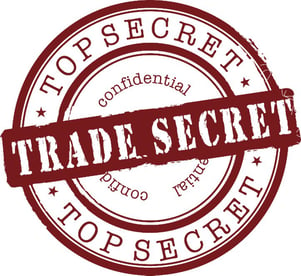- September 6, 2022
- Greg Magarian
- Intellectual Property
 To date, the Faruki+ Intellectual Property Blog Series has discussed copyright, patent, and trademark issues. These three types of intellectual property share a common trait: their legal protections come about, or at least can be strengthened, by registering them with the appropriate government agency. These protections, however, are not absolute:
To date, the Faruki+ Intellectual Property Blog Series has discussed copyright, patent, and trademark issues. These three types of intellectual property share a common trait: their legal protections come about, or at least can be strengthened, by registering them with the appropriate government agency. These protections, however, are not absolute:
"A valid patent provides a legal monopoly for seventeen years in exchange for public disclosure of an invention. If, however, the courts ultimately decide that the Patent Office improperly issued a patent, an invention will have been disclosed to competitors with no corresponding benefit. In view of the substantial number of patents that are invalidated by the courts, many businesses now elect to protect commercially valuable information through reliance upon the state law of trade secret protection."[1]
In contrast to those types of intellectual property, trade secrets are commercial practices, processes, or information that are not generally known outside of a business. Historically, businesses could seek to prevent improper use or disclosure of trade secrets through common law tort actions. In 1979, the National Conference of Commissioners on Uniform State Laws sought to harmonize state trade secrets law and promulgated the Uniform Trade Secrets Act ("UTSA"). 48 states, including Ohio, and the District Columbia have adopted their own version of the UTSA.
Notwithstanding the UTSA's provisions, businesses should take steps to protect their trade secrets from unlawful use or disclosure. This Blog Post discusses different ways businesses can ensure their trade secrets are afforded legal protection.
What is a "Trade Secret?"
A trade secret is information that (1) derives independent value from not being generally known and readily ascertainable by proper means to other persons who would benefit economically from its disclosure or use and (2) is subject to reasonable efforts to maintain its secrecy.[2] In other words, a trade secret is unique, economically beneficial, information that a business actively protects from its competitors.
Despite this broad definition, trade secrets generally fall into a few categories:
- Processes;
- Programs (i.e., algorithms);
- Formulas (i.e., recipes);
- Compilations or databases (i.e., customer lists); or
- Methods, techniques, or "know-how."
Protecting Trade Secrets
In order to qualify as a trade secret, the information must be subject to reasonable efforts to maintain its secrecy. The key word is reasonable—not every business needs to keep its secret recipe in a secure bank vault. Nonetheless, recent estimates put total losses from trade secret theft between $180 billion and $540 billion.[3] Businesses must affirmatively take steps to protect their trade secrets and should consult with legal counsel to determine what steps are reasonable for different types of trade secrets.
It is sometimes necessary to share commercially sensitive information with third parties in the course of business. For example: employees may require access to trade secrets to perform their job duties, or a seller may need to share proprietary information with a buyer to close a transaction. Here are some common, reasonable ways to protect trade secrets:
- Limit access and share information on a need-to-know basis only;
- Designate or mark documents a "CONFIDENTIAL";
- Physical Security: restrict access to locations with commercially sensitive documents by posting security personnel, requiring a keycard/access badge, or storing;
- Cyber Security: work with IT to restrict access to files or systems (i.e., customer lists, proprietary software) with password protection or other encryption methods;
- Require non-disclosure or confidentiality agreements that prohibit the party receiving trade secrets from disclosing the information to third parties. These agreements are generally enforceable as long as they are reasonable and not over broad, there is valid consideration (i.e., conditioning employment upon signing an NDA), and the information is actually a trade secret;
- Register patent, trademark, or copyright protection, if appropriate.
Remedies for Misappropriation
Despite these reasonable efforts to protect information, there can be no guarantee of security of commercially sensitive information. Each state's UTSA provides remedies for the misappropriation of trade secrets when it does occur, including the ability to seek an injunction to prevent further use or disclosure or to condition future use on payment of a reasonable royalty, or to seek damages and attorney's fees.[4] These remedies are only available to actual trade secrets. Businesses should consult with counsel to determine the appropriate levels of protection for their trade secrets both to maintain their secrecy and to ensure the availability of legal protections.
_______________
[1] Uniform Trade Secrets Act, Prefatory Note.
[2] UTSA § 1(4); see also Ohio Rev. Code § 1333.61(D); Ky. Rev. Stat. § 365.880(4).
[3] The Commission on the Theft of American Intellectual Property, "The Theft of American Intellectual Property: Reassessments of the Challenge and United States Policy" (2017).
[4] UTSA §§ 2-4; see also Ohio Rev. Code §§ 1333.62-64; Ky. Rev. Stat. §§ 365.882-886.
